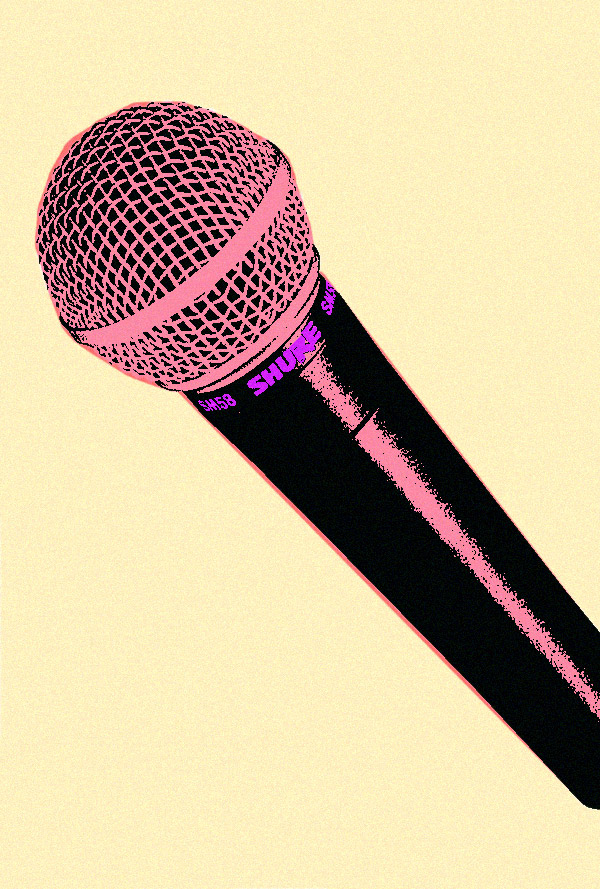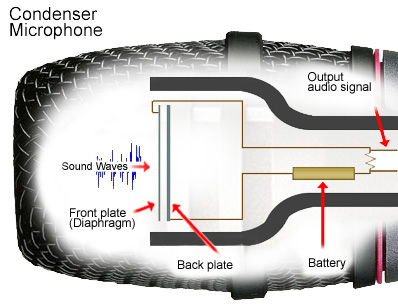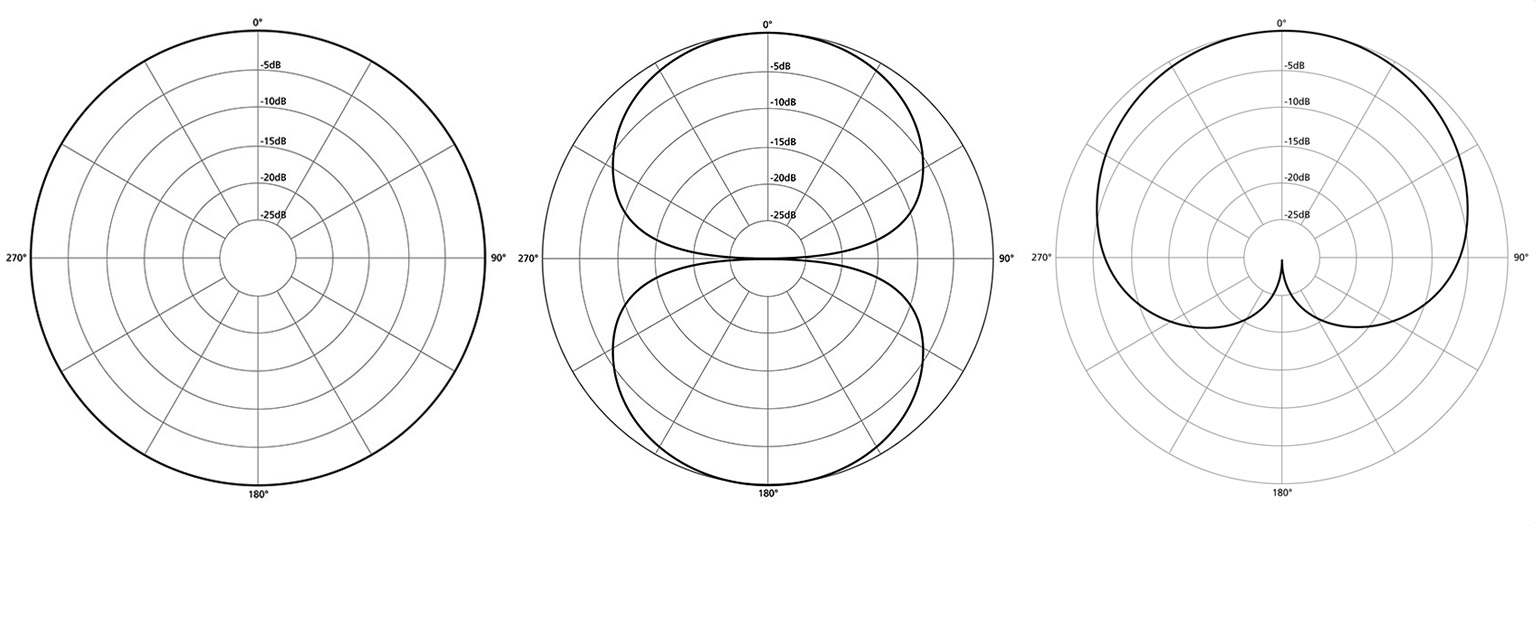
Much like headphones, looking into microphones can be a little daunting. Most of us just want something that will do the desired job easily and effectively. But once you start researching, things can get technical quite quickly. On top of that there’s a myriad of options from different brands and models to sift through. So, we thought we’d try to examine the microphone by discussing the two main types, some of the different configurations they use to pick up sound and how different options might be better for certain recording situations.
Firstly, we’re going to look at the two main types of microphone you’ll come across. To do that it’s important to mention that a microphone is essentially a transducer; it converts mechanical energy, in this case the movement of the diaphragm by soundwaves into electrical energy, which are then interpreted by an amplifier or interface. Another way to think of it, is that it operates like a speaker in reverse.

Dynamic
Dynamic microphones have three main components: a diaphragm (which is typically a thin plastic membrane), a small coil of thin wire (known as a voice coil) and a magnet (which is charged and creates a magnetic field). When sound hits the diaphragm the voice coil moves inside the magnetic field and creates an electrical signal that corresponds to the soundwave. Due to this construction, dynamic mics are also sometimes referred to as “moving-coil” microphones. Due to their simpler construction they’re often very rugged and less susceptible to environmental conditions such as heat and moisture. They also handle loud noise very well and have decent noise rejection. Because of these characteristics dynamic mics are extremely popular in live music settings. These are the mics you see singers swinging around, dropping on the ground, throwing into amps and sweating all over. They’re chosen for this purpose because usually, they can take all this punishment and keep working. Dynamic mics are also very popular in the broadcast world, which is why when you speak into a dynamic microphone at very close proximity you can achieve that very full, round broadcast/radio style tone. On the downside, dynamic mics can often be less sensitive, meaning they have a lower frequency response and may not replicate sound as naturally as you may wish. But in some cases the “colouration” of sound that a dynamic mic can produce, may be what you’re looking for.

Condenser
Like their dynamic cousins, condenser microphones also have three primary components. A diaphragm, usually constructed of very thin metal or metal coated plastic, is positioned in front of a backplate made from either metal of metal coated ceramic. This is then housed in the diaphragm case. The frontplate (diaphragm) and backplate are fixed a specific width apart and an electrical charge is applied. When this capsule is charged an electrical field is created so that as sound waves hit the diaphragm and it moves closer and further from the back plate the audio signal is converted to an electrical one. Due to the nature of this construction the signal produced is quite small and so all condenser mics have additional active circuitry to allow them to be used with regular mic inputs. This active circuitry needs to be powered and so all condenser mics need either batteries or what is known as “phantom power”. The up-side is that this style of capsule is often able to reproduce a wider frequency range, is more sensitive to transient dynamics and generally has a more natural sound. Overall, condenser microphones usually exhibit a higher sensitivity and tend to be more accurate. However, because they contain more complex and sensitive components, most condenser mics aren’t as rugged as a dynamic. For these reasons, you tend to see condenser microphones in more controlled environments i.e. the studio where they’re prized for recording vocals and instruments due to their sound reproduction characteristics.
Phantom Power
Having just discussed condenser microphones and how they require an external power source, it’s probably a good idea to look at the most common version of that: phantom power. Essentially, phantom power is a DC voltage that’s transmitted through a microphone cable to operate the active circuitry in a condenser microphone. It’s known as “phantom power” because there’s no obvious, external power source. Rather phantom power is usually supplied via a mixer, pre-amp or audio interface and is often a button on that unit next to the input or channel. Usually phantom is supplied at somewhere between 12-48v, with 48v being the most common.
Polar Patterns
This is another major attribute you’ll come across when looking at microphones. A mic’s poplar pattern refers to the directionality of its pick-up response. Basically, in the space around the mic capsule, from which areas will it pick-up sound and which will it not. To explain this, polar patterns are divided into different configurations:
Omnidirectional: Omni mics have no directional information, they pick up sound info, equally from all directions.
Figure-8: As the name suggests these mics are sensitive to sound from the front and rear of the diaphragm, but reject sound at the sides, creating a figure-8 pattern of response.
Cardioid: These microphones have a strong directional response at the front, while maintaining some sensitivity on the sides and rejecting sound from the back.
 Omnidirectional (Left), Figure 8 (Centre), Cardioid (Right)
Omnidirectional (Left), Figure 8 (Centre), Cardioid (Right)
Variations: There are also a few variations of the cardioid pattern. The Supercardioid is narrower than a regular cardioid with small amount of rear sensitivity and the Hypercardioid is narrower still, with even more sensitivity at the back (getting closer to a figure of 8 pattern). There are more variations on the main polar patterns, but these are the most common.
 Supercardioid (Left) and Hypercardioid (Right)
Supercardioid (Left) and Hypercardioid (Right)
As you can imagine, these different patterns can be useful for different recording situations and with the correct knowledge you can attempt to arrange your microphones so that your recording setup minimizes the amount of off axis sound you capture. As a few examples, Omni mics are great for capturing a room, something very wide or moving, while cardioids are very directional and can be best at isolating a sound source.
Figure of 8 microphones can also be useful for isolation as they only capture sound at the front and back, but they are often used for capturing a stereo image in configurations like a Blumlein Pair or in Mid-side recording when used in combination with a cardioid.
 Blumlein Pair (Left) and Mid-Side configuration (Right)
Blumlein Pair (Left) and Mid-Side configuration (Right)
It is also worth noting that some microphones have multiple, switchable polar patterns, which can be useful if you need something versatile.